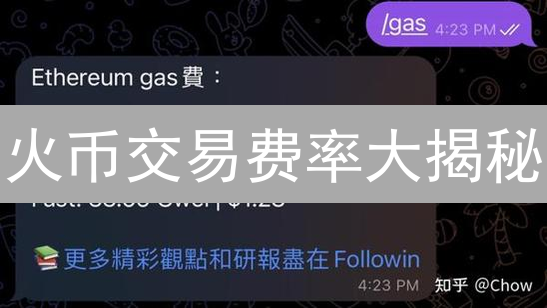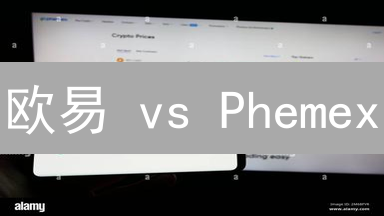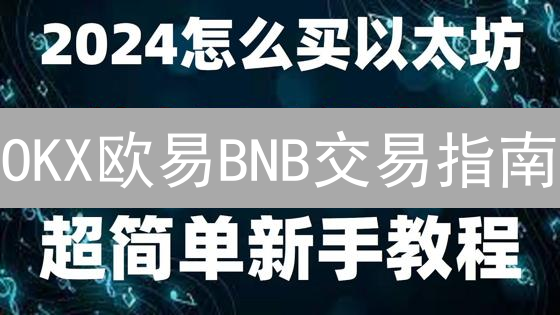欧易账户余额查询指南:多维度掌握您的数字资产
作为一名加密货币投资者,清晰了解自己在欧易交易所的账户余额至关重要。 这不仅能帮助您监控投资表现,还能确保您在交易决策时拥有准确的数据支持。 本文将详细介绍如何在欧易平台便捷、全面地查询您的账户余额,无论您是使用网页端、App 还是 API 接口,都能找到适合自己的方式。
网页端查询:一览全局资产
欧易网页端精心打造了直观、全面的资产展示界面,用户可以轻松地查看包括资金账户、交易账户等多种账户类型下的详细余额信息。该界面设计旨在提供清晰透明的资产概览,帮助用户更好地管理和掌握其加密货币资产。
登录欧易官网: 首先,在浏览器中输入欧易官网地址 (例如 okx.com),并使用您的账号密码或手机验证码登录。- 资金账户: 主要用于充值、提现和内部转账,存放着您尚未用于交易的资金。 在资金账户中,您可以查看每种币种的余额。
- 交易账户: 用于币币交易,存放着您用于交易的数字货币。 您可以在交易账户中查看不同交易对的可用余额。
- 金融账户: 用于参与欧易平台的理财产品,例如余币宝、DeFi挖矿等。 您可以在金融账户中查看理财产品的持有量和收益。
- 合约账户: 用于进行永续合约和交割合约交易,需要进行风险评估并通过测试才能开通。 您可以在合约账户中查看保证金余额、持仓情况和未实现盈亏。
- 统一交易账户: 欧易推出的高级账户模式,整合了多种交易类型,提供更高的资金利用率和更便捷的交易体验。 如果您开通了统一交易账户,可以在该账户中查看所有交易类型的余额。
App 端查询:随时随地掌控您的加密资产
欧易 App 为您提供强大的移动端资产管理功能,让您可以随时随地、便捷高效地查看账户余额、交易记录以及其他关键信息。无论身处何地,都能轻松掌握您的加密货币投资组合,及时做出决策。
打开欧易 App 并登录: 在您的手机上打开欧易 App,并使用您的账号密码、指纹或面容识别登录。API 查询:专业用户的选择
对于寻求自动化交易策略、构建复杂自定义资产管理平台,或进行大规模数据分析的高级用户,欧易交易所提供了强大的 API (应用程序编程接口)。API 接口允许用户通过编写代码的方式,自动化地查询其账户余额、历史交易记录、订单状态等关键信息,极大地提高了效率和灵活性。
使用 API 接口进行账户余额查询,相较于手动登录网页或移动应用,具备以下显著优势:
- 自动化与效率: 通过脚本或应用程序自动执行查询,无需人工干预,大大节省时间和精力。
- 实时性: API 接口提供近乎实时的账户数据,确保用户能够及时掌握资产状况。
- 定制化: 开发者可以根据自身需求,灵活定制查询参数和数据处理方式,满足各种个性化应用场景。
- 集成性: API 接口可以轻松集成到现有的交易系统、风险管理平台或数据分析工具中,实现无缝连接。
示例代码 (Python):
在加密货币交易和数据分析中,Python 是一种常用的编程语言。以下代码段展示了如何使用 Python 库来获取加密货币数据。
requests
库允许你发送 HTTP 请求,而
库用于处理 JSON 格式的数据。
import requests
import
# 定义 API 端点,例如 CoinGecko API 用于获取比特币 (BTC) 的价格
api_url = "https://api.coingecko.com/api/v3/simple/price?ids=bitcoin&vs_currencies=usd"
# 发送 GET 请求到 API 端点
response = requests.get(api_url)
# 检查响应状态码,确保请求成功 (200)
if response.status_code == 200:
# 将响应内容解析为 JSON 格式
data = .loads(response.text)
# 从 JSON 数据中提取比特币的价格 (USD)
bitcoin_price = data["bitcoin"]["usd"]
# 打印比特币的价格
print(f"比特币 (BTC) 的当前价格 (USD): {bitcoin_price}")
else:
# 如果请求失败,则打印错误信息
print(f"请求失败,状态码: {response.status_code}")
# 扩展示例:获取更多信息,例如交易量和市值
api_url_extended = "https://api.coingecko.com/api/v3/coins/bitcoin"
response_extended = requests.get(api_url_extended)
if response_extended.status_code == 200:
data_extended = .loads(response_extended.text)
# 获取 24 小时交易量
volume_24h = data_extended["market_data"]["total_volume"]["usd"]
# 获取市值
market_cap = data_extended["market_data"]["market_cap"]["usd"]
print(f"比特币 (BTC) 24 小时交易量 (USD): {volume_24h}")
print(f"比特币 (BTC) 市值 (USD): {market_cap}")
else:
print(f"扩展请求失败,状态码: {response_extended.status_code}")
这段代码首先导入了
requests
和
库。然后,它定义了一个 API 端点,用于获取比特币的价格。接下来,它发送一个 GET 请求到该端点,并将响应内容解析为 JSON 格式。它从 JSON 数据中提取比特币的价格并打印出来。此示例还扩展了功能,展示如何从 API 获取更多信息,如24小时交易量和市值。
替换为您的 API 密钥和密钥
为了安全地访问和使用加密货币交易所的API,您需要配置您的API密钥和密钥。 API密钥用于识别您的账户,密钥用于验证您的请求,确保只有您才能执行交易或访问敏感数据。
请务必将以下代码片段中的
YOUR_API_KEY
和
YOUR_SECRET_KEY
替换为您从交易所获得的实际API密钥和密钥。
api_key = "YOUR_API_KEY"
secret_key = "YOUR_SECRET_KEY"
重要提示: 请妥善保管您的API密钥和密钥。不要将它们存储在公共位置,例如代码仓库或公开的配置文件中。建议使用环境变量或加密的方式来存储这些敏感信息,并定期更换密钥以提高安全性。如果您的密钥泄露,请立即撤销该密钥并生成新的密钥。
不同的交易所可能有不同的API密钥生成和管理流程。 请参考您所使用的交易所的官方文档,获取关于API密钥管理的详细说明。
API Endpoint for Account Balance
The API endpoint for retrieving account balance information typically follows a RESTful structure. For example, on the OKX exchange, it might look like this:
url = "https://www.okx.com/api/v5/account/balance"
Important Note: This URL is illustrative and serves as an example. Always consult the official API documentation of the specific exchange (e.g., OKX, Binance, Coinbase) you are using to obtain the correct and up-to-date endpoint URL. API versions and structures can change.
When making an API request, it is essential to include specific headers for authentication and data formatting. Here's a breakdown of the headers typically required:
headers = {
"OK-ACCESS-KEY": api_key,
"OK-ACCESS-SIGN": "YOUR_SIGNATURE",
"OK-ACCESS-TIMESTAMP": "YOUR_TIMESTAMP",
"OK-ACCESS-PASSPHRASE": "YOUR_PASSPHRASE",
"Content-Type": "application/"
}
- OK-ACCESS-KEY: Your unique API key, which identifies your account and grants you access to the API.
- OK-ACCESS-SIGN: A digital signature generated using your secret key. This signature verifies the authenticity of your request and prevents tampering. The specific method for generating the signature (e.g., HMAC-SHA256) is usually detailed in the API documentation.
- OK-ACCESS-TIMESTAMP: The current Unix timestamp (in seconds) when the request is made. This helps prevent replay attacks.
- OK-ACCESS-PASSPHRASE: An optional passphrase used for additional security. If you have set a passphrase on your account, you must include it in the header.
-
Content-Type:
Specifies the format of the data being sent in the request body (if any). For most cryptocurrency APIs,
application/is standard.
API endpoints often accept parameters to refine the data returned. In the case of account balances, you might specify the currency you are interested in:
params = {
"ccy": "BTC" # Specify the currency to query (e.g., BTC, ETH, USDT). If omitted, all currencies may be returned.
}
To make the API request and process the response, you can use a library like
requests
in Python:
response = requests.get(url, headers=headers, params=params)
After making the request, it is crucial to check the response status code to determine if the request was successful:
if response.status_code == 200:
data = response.()
print(.dumps(data, indent=4)) # Format and print the JSON response for readability
# Extract balance information from the 'data' object.
# The structure of 'data' varies depending on the specific API.
# Example: data['data'][0]['bal'] (This is just an example; consult the API documentation).
else:
print(f"Error: {response.status_code}, {response.text}")
Important Considerations:
- Error Handling: Always implement robust error handling to catch potential issues such as invalid API keys, incorrect signatures, rate limits, and network errors.
- Rate Limiting: Be aware of API rate limits to avoid being blocked. Implement logic to handle rate limits gracefully, such as pausing requests or using exponential backoff.
- Security: Protect your API keys and secret keys. Never hardcode them directly into your code. Use environment variables or secure configuration files to store them.
- API Documentation: The official API documentation is your primary source of information. Refer to it for the most accurate and up-to-date details on endpoints, parameters, headers, response formats, and error codes.
-
JSON Parsing:
Use a reliable JSON parsing library (like the built-in
- Data Validation: Validate the data returned by the API to ensure it is in the expected format and within reasonable ranges.







![欧易首发![币种名称]即将引爆,现在布局,抢占先机!](https://www.mdvkhbk.com/static/article_images/1741443225.png)